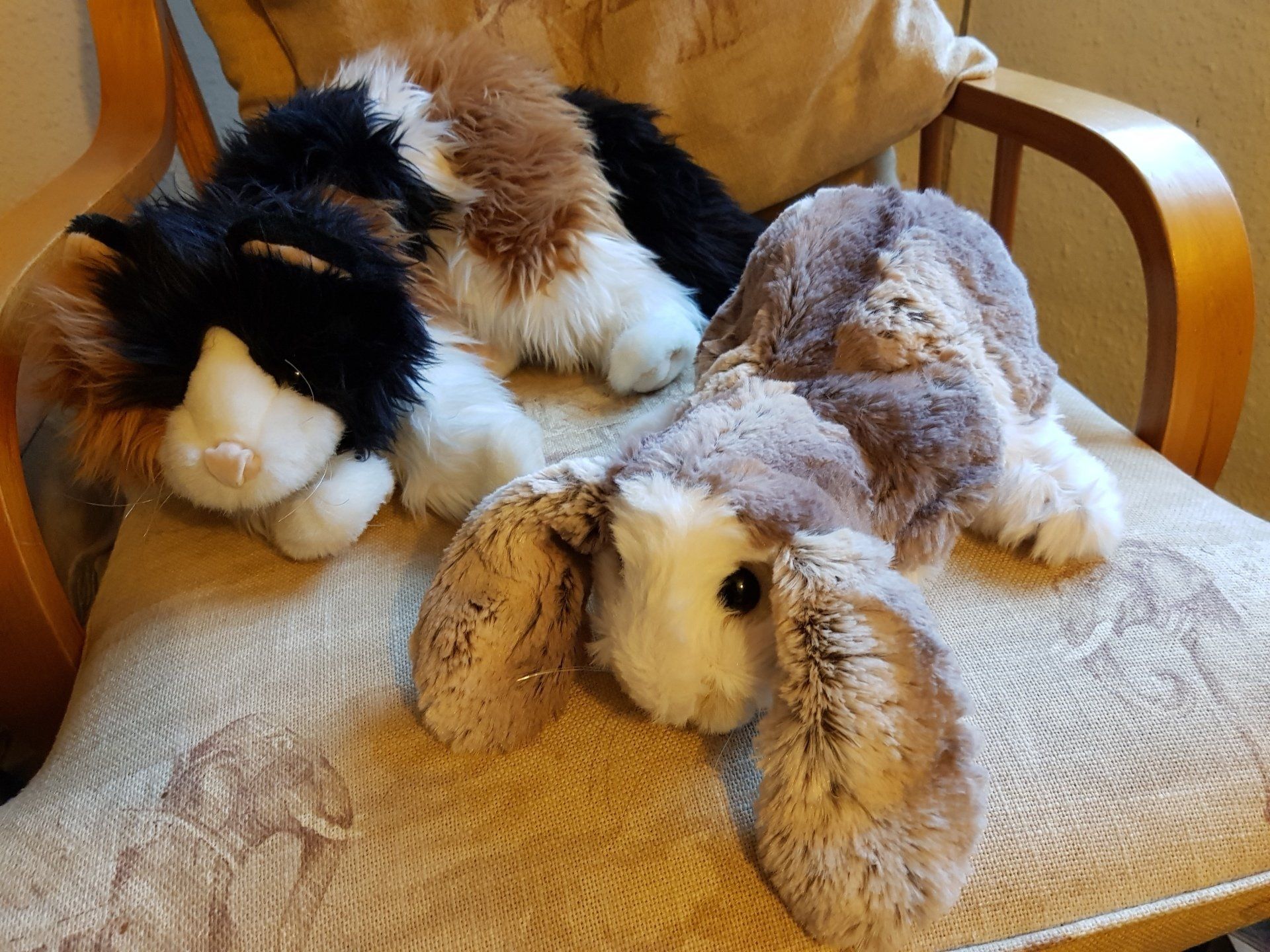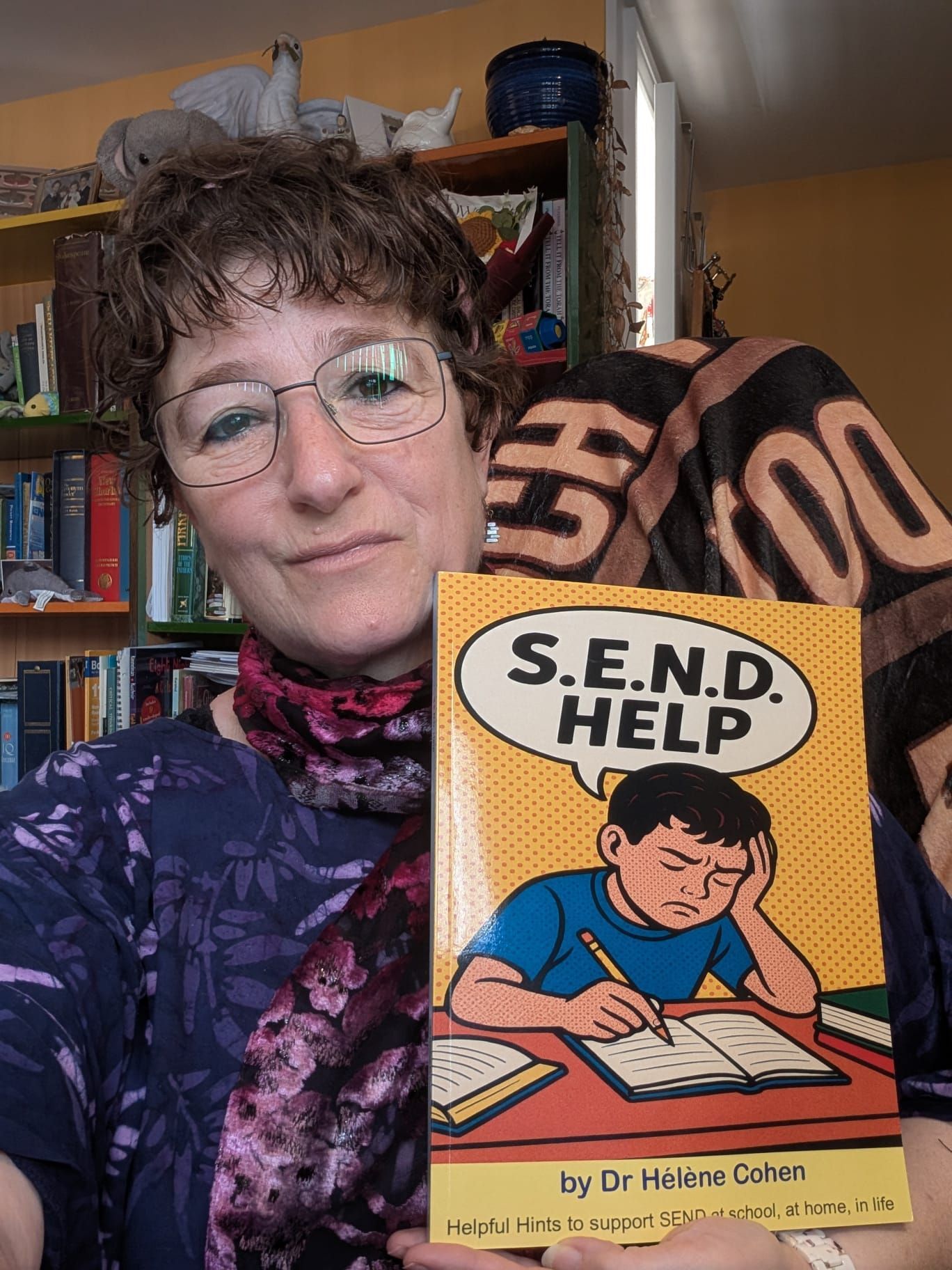Helping a child with SM to find her voice
This leads me to make mention of how we communicated, negotiated and came to understandings. It was largely through writing and drawing. This would be done on mini whiteboards to allow for wiping things away. Chloë liked to be in control of the whiteboard. If I set out choices, she would draw little boxes in which to record a tick or cross to show her preferences. Whenever I drew a box, it was never neat enough for her exacting standards, and would be erased and replaced with one drawn by Chloë! Through this communication, I learned that she was texting some Year 6 girls, and had wished she had spoken the first time they had played together. This not only shows just how important each first encounter is, but how selective mutism is not a choice, not stubbornness, but deep rooted anxiety.
Then the first real sound that I heard from Chloë, her giggle! Like Champagne being poured from a bottle. I have already mentioned her sense of fun, so the talking tasks were built around this. The friends chosen to join in were all gigglers, and as Chloë relaxed, so her laughter escaped. This helped her to move on to some silly sounds –‘huh’, tongue clicking and sucking against the roof of her mouth.
These may all be tiny steps, but each marked huge progress for Chloë. Working with those who have selective mutism requires constant patience alongside tiny steps that each move things forward. It is so important to keep some momentum and not stay still, however tiny the steps may be.
To further build on this, I became her Form teacher in Year 4. The only subject I taught her was spelling, as we don’t have all subjects taught by the Form teacher in our school, but it meant that she and I could touch base throughout the day. ‘Thumbs up’ became Chloë’s first form of communication with the now increasing number of teachers that she encountered daily. We built on this with technology. The first step was Chloë recording things at home for me to hear, including conversations with her mum and sister, reading and then questions for me, so that we were conversing remotely. Initially I heard these recordings alone, then with Chloë in the next room and eventually with her in the same room, so that she, her voice and I were in the room together.
The emotion of hearing Chloë’s voice for the first time was overwhelming, so I was relieved to have been alone for that. Having focussed on the whole ‘underplay’ element – “no pressure, your voice will come in time” etc – had she witnessed my delightfully tearful response, it would have been hard to convince her that we were relaxed about her selective mutism.
We then agreed who would be allowed to hear the various recordings, each initially being heard without Chloë present. The teachers would let Chloë know when they had heard her voice, and even those who thought they could distance themselves, were moved beyond their expectations by the impact her voice had on them. Her voice, an ordinary little girl’s voice. What had we all expected? I don’t know. Yet we all had the same first response – she sounds so normal!
Recording Chloë’s voice progressed over the time she was in the Junior School. We used it in a structured way so that Chloë could demonstrate her learning to her teachers. This included explaining ‘forces’ to her male Science teacher; reciting numbers in French – a super French accent - and even telling us when things were troubling her. Throughout all of this, Chloë was supported by her friends. Everyone in her class was reminded that Chloë hadn’t yet found her voice, but would do so in time, so that the openness was there throughout.
While Chloë was in Year 4, I saw Maggie Johnson’s television programme on selective mutism. In this there was a child who would communicate with her grandfather by texting. I thought this would be a good idea to introduce at school, as it would allow ‘in the moment’ communication between Chloë and her teachers. We’d tried a mini whiteboard, but these ‘show me’ boards are still a fairly public form of communication, which was quite daunting for Chloë. I purchased two extremely basic phones, one black and one pink, that each had the other’s number saved so that they could be used solely for texting each other. This proved a success. Chloë was able to answer questions in class and even let me know if something was bothering her. Hers was the pink phone, naturally! The amazing thing is how accepting the other children always are. The worries of their reaction to a child having a phone in school, albeit a basic one, were short lived. Having seen it, and had the reason for it explained, they simply accepted it. This is true of so many interventions for learning support.
I remained Chloë’s Form tutor for Year 5. We had a fun activity of writing riddles and her classmates would be called on to offer theirs to the group. How could Chloë join in? Chloë and I agreed that she would record her riddle on a talking postcard, which I could then play to the class. This would be a big step for Chloë, as most of her form had been at school with her for several years by then without ever having heard her voice, so this needed to be considered carefully. Eventually we agreed that we would use the talking postcard with several children first, so that it wouldn’t automatically signal that the voice was going to be Chloë’s. Then when the day came to play Chloë’s riddle she would first leave the class, ostensibly to run an errand for me, so that she could be out of the room when it was played. Then, after the class had heard it, I would explain that it had been Chloë. I made one mistake. I forgot to tell her closest friend what I was doing. All went to plan and Chloë went to fetch something from my office. I played her riddle and noticed that Chloë’s closest friend was looking daggers at me. Credit due, she didn’t say a word to indicate whose riddle we were hearing. She just sat there, staring at me, pure anger in her eyes. After solving the riddle, one by one children started to ask whose riddle it was. I looked straight at Chloë’s friend and explained not only whose riddle it was, but that she knew that I was playing it to them, which was why she was out of the room. Her friend relaxed immediately and I apologised for not having forewarned her.
Key to this stage was to explain to the class that they were not to make a fuss about this when Chloë returned to class. This is the crux of what she had been dreading, the attention made of her once everyone realised that they had heard her voice.
To be continued next week…


